Rome - Best Sights & Tastes
Save for Later
Share
Rome - Best Sights & Tastes
Monica Mikhail
Main attractions to see, and best local cuisine in the eternal city. Everything you will need in the palm of your hands.
Updated ago
1
Share
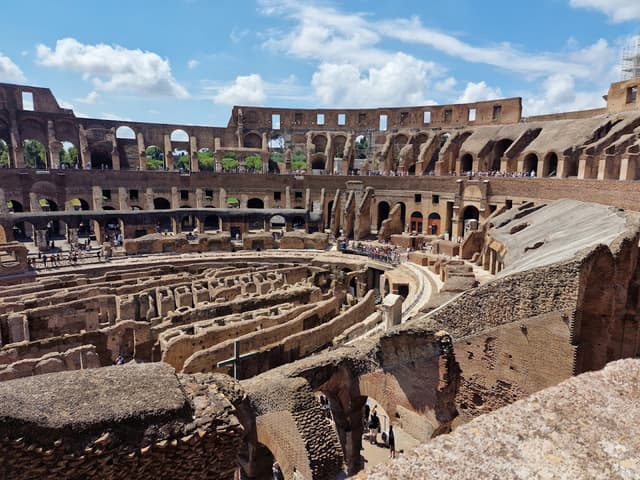
Colosseum
@monicamikhail
The Colosseum, also known as the Flavian Amphitheatre, is an iconic symbol of Rome and one of the most famous landmarks in the world. It is an oval-shaped amphitheater located in the center of Rome, Italy, and is considered one of the greatest architectural and engineering feats of the ancient Roman Empire. The construction of the Colosseum began in 72 AD and was completed in 80 AD under the rule of the emperors Vespasian and Titus. The Colosseum was primarily used for gladiatorial contests and public spectacles, such as animal hunts, mock sea battles, and reenactments of famous battles and mythological scenes. The Colosseum could hold up to 80,000 spectators and had a sophisticated system of elevators, trapdoors, and ramps to move people, animals, and scenery in and out of the arena. It was built using concrete and stone and was considered a marvel of Roman engineering. Despite suffering from earthquakes, fires, and vandalism over the centuries, the Colosseum still stands today as a testament to the ingenuity and architectural prowess of the ancient Romans. It is a popular tourist destination and a UNESCO World Heritage site, attracting millions of visitors every year. Admissions start at €24.
Add to
Details
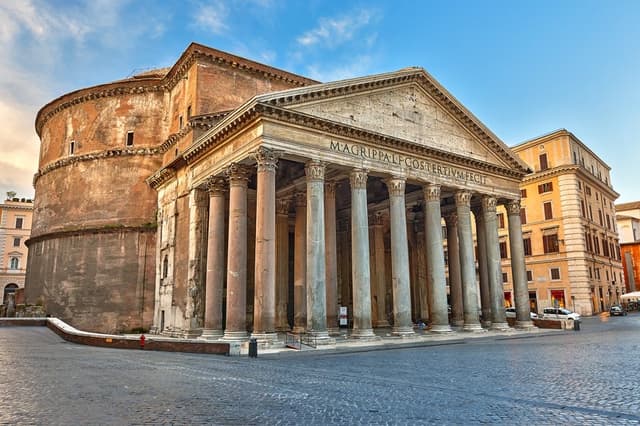
Pantheon
@monicamikhail
The Pantheon is one of the most well-preserved ancient buildings in Rome, Italy, and is considered a masterpiece of Roman engineering and architecture. It is a circular temple that was built between 118 and 128 AD by Emperor Hadrian and is dedicated to all the gods of ancient Rome. The Pantheon is famous for its massive dome, which was the largest unsupported dome in the world until modern times. The dome is made of concrete and is 43 meters (142 feet) in diameter, with a central opening (oculus) that allows light to enter the building. The temple has a portico of Corinthian columns and is built using a combination of brick, marble, and granite. Inside, the Pantheon is decorated with intricate marble flooring, frescoes, and sculptures.
Add to
Details
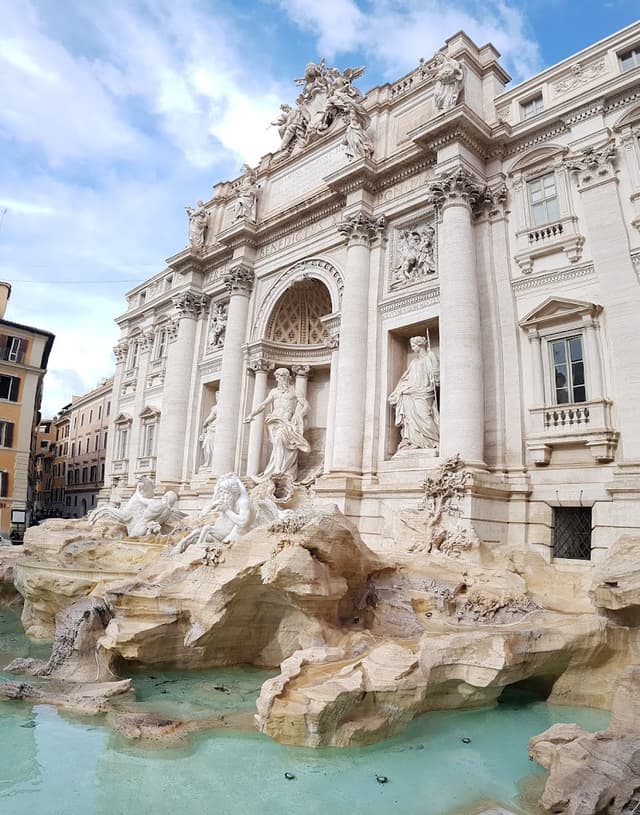
Trevi Fountain
@monicamikhail
The Trevi Fountain is a famous Baroque fountain located in the heart of Rome, Italy. It is the largest and most famous fountain in Rome, and one of the most iconic landmarks in the city. The fountain was designed by Italian architect Nicola Salvi in the 18th century and was completed by Giuseppe Pannini after Salvi's death. The Trevi Fountain is located at the junction of three roads, or "tre vie," which gives the fountain its name. It features a grand, theatrical design with a central figure of Neptune, the Roman god of the sea, riding a chariot pulled by two sea horses. The fountain is adorned with sculptures of other sea creatures, including tritons and sea nymphs. According to legend, tossing a coin into the Trevi Fountain ensures that you will return to Rome someday. This tradition has become very popular among tourists, and an estimated 3,000 euros are thrown into the fountain each day. The money is collected and donated to a charity that helps the poor in Rome.
Add to
Details

St. Peter's Basilica
@monicamikhail
St. Peter's Basilica is a magnificent church located in Vatican City, the smallest independent state in the world, located within the city of Rome, Italy. It is considered one of the most important Catholic churches in the world and is the burial place of Saint Peter, one of Jesus' twelve apostles and the first bishop of Rome. The construction of St. Peter's Basilica began in 1506 and was completed in 1626, spanning more than a century. It was designed by famous architects, including Michelangelo, Bramante, and Bernini, and features a mix of architectural styles, including Renaissance and Baroque. The basilica is known for its grandeur and beauty, with a massive dome that rises above the Vatican skyline. It is home to many priceless works of art, including Michelangelo's famous sculpture, "La Pietà," which depicts the body of Jesus on the lap of his mother, Mary. St. Peter's Basilica is also the site of many important events in Catholicism, including the election of new popes and the celebration of Mass on special occasions. Visitors can tour the basilica and admire its stunning architecture and artwork, including the breathtaking views from the top of the dome.
Add to
Details
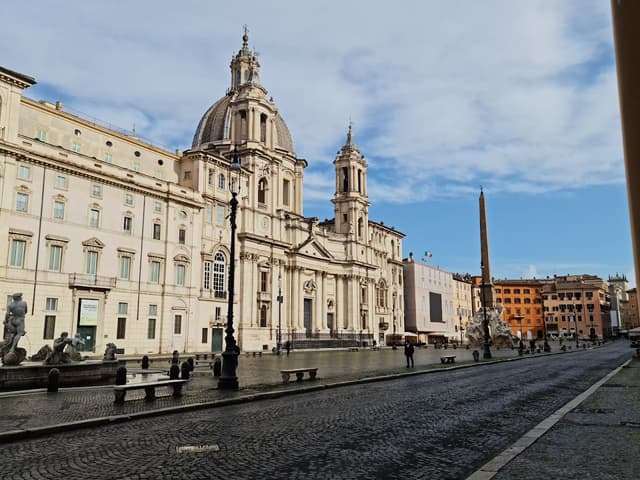
Piazza Navona
@monicamikhail
Piazza Navona is a beautiful and lively square located in the historic center of Rome, Italy. It is one of the most popular tourist destinations in the city and is known for its stunning Baroque architecture, fountains, and vibrant atmosphere. The square was originally built as a stadium in the 1st century AD, where chariot races and other athletic competitions were held. Today, it is surrounded by elegant palaces, cafes, restaurants, and shops, and is a popular spot for locals and tourists alike. The centerpiece of Piazza Navona is the Fountain of the Four Rivers, designed by famous Baroque sculptor Gian Lorenzo Bernini. The fountain features four large statues that represent the four great rivers of the world: the Nile, the Ganges, the Danube, and the Rio de la Plata. Another famous landmark in Piazza Navona is the Church of Sant'Agnese in Agone, which has a stunning Baroque facade designed by Borromini and Rainaldi. The church was built on the site where Saint Agnes was martyred in the 4th century and is considered one of the most beautiful churches in Rome. Throughout the year, Piazza Navona is a hub of activity, with street performers, artists, and musicians entertaining visitors. During the Christmas season, the square is transformed into a festive market with stalls selling holiday treats and decorations.
Add to
Details
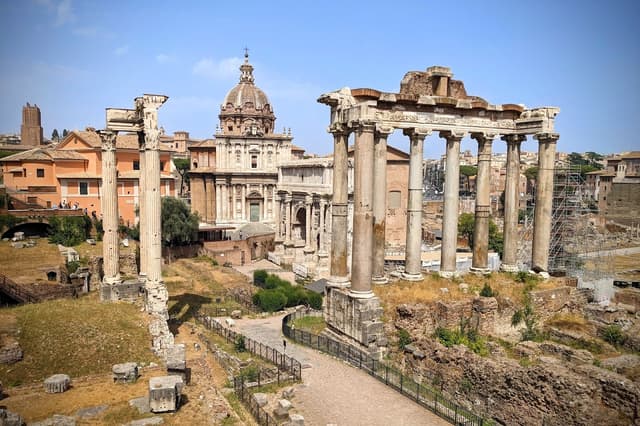
Roman Forum
@monicamikhail
The Roman Forum is a rectangular plaza located in the center of Rome, Italy. It was the political and social hub of ancient Rome, serving as a marketplace and the site of many important government buildings, temples, and monuments. The Forum was first developed in the 7th century BC and became the center of Roman public life by the 4th century BC. Over time, it was expanded and embellished with magnificent buildings, such as the Temple of Saturn, the Basilica Aemilia, and the Arch of Titus. The Forum was also the site of many important events in Roman history, including political debates, legal proceedings, and triumphal processions. It was the location of many famous speeches, such as those of Julius Caesar, and was the site of his assassination in 44 BC. Today, visitors can explore the ruins of the Forum and marvel at the remains of ancient structures that once stood there. The ruins include the Temple of Vesta, the House of the Vestal Virgins, and the Curia, which was the meeting place of the Roman Senate.
Add to
Details

Spanish Steps
@monicamikhail
The Spanish Steps is a beautiful and iconic staircase located in Rome, Italy. It is one of the most famous landmarks in the city and is a popular destination for tourists and locals alike. The staircase is made up of 138 steps that climb up a steep slope between the Piazza di Spagna at the bottom and the Trinità dei Monti church at the top. The steps were built in the 18th century to connect the church with the Spanish Embassy, which is located at the base of the steps. At the base of the Spanish Steps is the famous Baroque fountain, Fontana della Barcaccia, which was designed by Gian Lorenzo Bernini and his son. The fountain depicts a half-sunken boat, which is meant to represent the flooding of the Tiber River. The Spanish Steps have been the site of many famous events throughout history, including fashion shows, concerts, and political demonstrations. It's also a great place to relax, people-watch, and soak up the lively atmosphere of this iconic Roman landmark.
Add to
Details
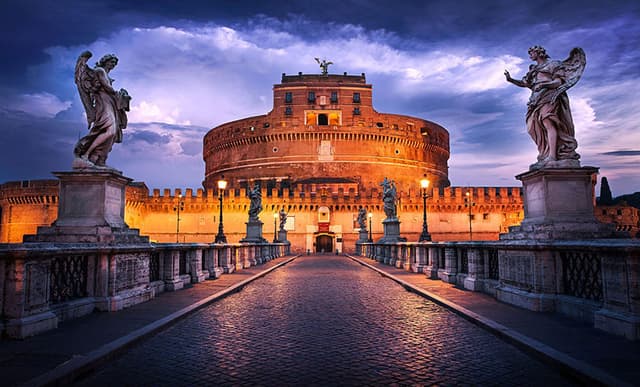
Castel Sant'Angelo
@monicamikhail
Castel Sant'Angelo is a historic fortress located in Rome, Italy. It was originally built as a mausoleum for the Roman Emperor Hadrian in the 2nd century AD, and was later converted into a castle by popes in the Middle Ages. The castle is located on the banks of the Tiber River and is connected to the Vatican City by a fortified corridor. It was used as a refuge for popes during times of political unrest, and also served as a prison and a military fortress over the centuries. Castel Sant'Angelo is known for its stunning architecture, including a cylindrical tower and a beautiful bridge leading to the entrance of the fortress. The interior of the castle features impressive works of art and frescoes, as well as historical exhibits that showcase the building's rich history. One of the most famous features of Castel Sant'Angelo is the Passetto di Borgo, a fortified corridor that connects the fortress to the Vatican City. The corridor was built in the 16th century as an escape route for popes during times of danger, and was famously used by Pope Clement VII during the Sack of Rome in 1527. Today, visitors can explore the castle and its exhibits, as well as enjoy the stunning views of Rome from the top of the fortress.
Add to
Details

Buy to unlock full guide
Access all the local insights and recommendations from @monicamikhail when you purchase this guide.
ABOUT THE AUTHOR
Monica Mikhail
Hi, my name is Monica, and I am honored to be your virtual tour guide. I was transformed the first time I traveled to a faraway place; I experienced different cultures, I found commonalities with humans from the other side of the earth, I feasted on varying delicacies, and I was rendered speechless by breathtaking sights. I wholeheartedly believe that travel is good for the soul; it helps shift and widen our perspective on the world and how we live our day to day.
I have traveled to over 50 cities in the last few years. I have always enjoyed the research and planning part of a trip, as it ensures that I get the most out of my trip and allows me a brief understanding of the culture and the geography before visiting. I always start my planning with a map. A map allows me to visualize the proximity of all the major sights and allows me to plan an efficient route to see all the attractions that the city has to offer.
What's included
Digital Map
Fully interactive, digital map for finding places nearby
76 places
76 hand-picked places with notes from the creator
DESTINATION(S) COVERED
Rome, Metropolitan City of Rome Capital, Italy
FOCUSES AND THEMES
Adventure
Architecture
Art
Boutique
Budget
Foodie
History
Format
Map
Maps are simple lists of places often grouped by themes, categories or geos.
COMMON QUESTIONS
What is Thatch?
Thatch is an online marketplace that provides instant access to thousands of vetted local experts and premium travel guides - making it the easiest and most affordable way to take high quality trips with less stress.
For travel creators (tastemakers, travel advisors, influencers and local experts) Thatch makes it easy to curate, publish, and sell digital travel guides, itineraries and personalized planning services.
What if I’m not satisfied with my purchase?
How do I access my purchased guides?
Can I access my guide offline?
How often are guides updated?
Can I request a personalized guide or itinerary?
Can I sell my own travel guides and itineraries?
Save for Later
Share